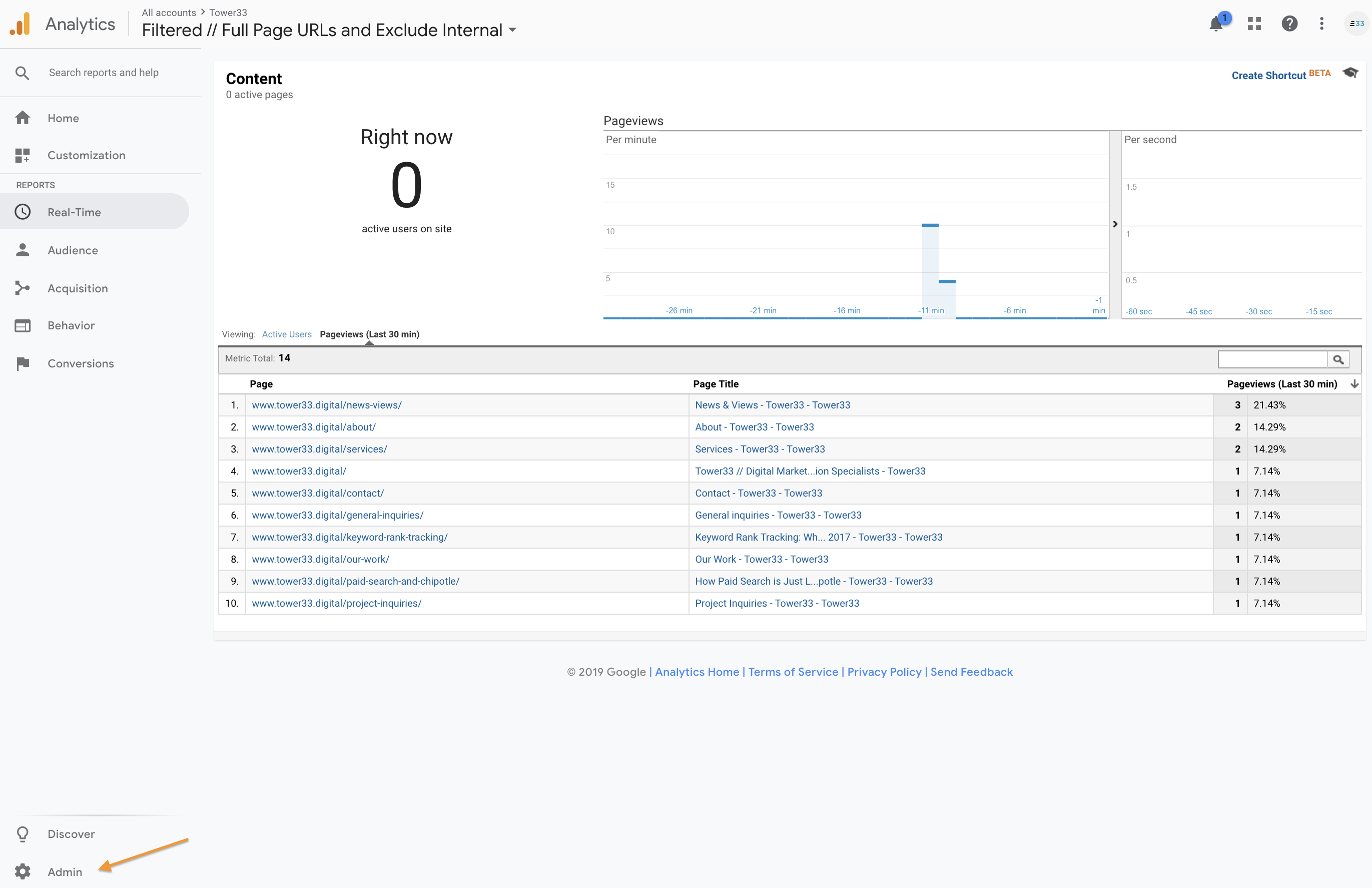Creating New Destination Goals in Google Analytics

Goals in Google Analytics are a powerful insights that help you better understand what value your visitors are providing. One common way for tracking goals is to use a destination page on your site that acts as a “trigger” for the goal to be recorded.
Ideal Uses for Destination Goals
- You send form submissions to thank you pages, such as www.yourdomain.com/thank-you
- Visitors can only reach this page through an invite-only or specifically directed page (not a contact page like www.yourdomain.com/contact
Not Ideal Uses for Destination Goals
- Completing a goal when traffic reaches a page that doesn’t indicate a goal
- Visitors on the site can reach the page in a number of various ways
Using an ideal example from above, like sending form submissions to a thank you page, here’s the walk-through guide to complete this setup.
Begin by opening the admin area.
Once inside the admin area, select “goals” from the column “view”. One note, goals are created per view, be sure you’re adding the goals to the correct view.

Next, select “new goal”

Then you’ll choose a goal template – you can choose custom or a “pre-built” template. My go-to is always “custom” so I can name setup the goal in line with what I’m tracking and/or where these goals are being triggered, etc.

Once you choose a goal type, you’ll move to the details of the name and goal type. If you have more than 1 type of contact form, or multiple form goals, try and develop some descriptive way of setting these up; Contact Us – General, Contact Us – Blog, Phone Call – Email Template, Phone Call – Main Nav, etc.

From here you’ll setup the details of where and how this goal will be triggered. Since this is a destination goal, be sure to take into account whether your destination needs to be an absolute URL or a relative URL.
You can also choose here whether this requires a prior step and utilize a required funnel step. This is helpful for accuracy in tracking when possible. If there’s a common page where these goals begin before getting to the actual trigger page, then you can utilize the funnel step.

Once those are all in place, save your goal and start watching the conversions roll in.
Thanks for reading!

